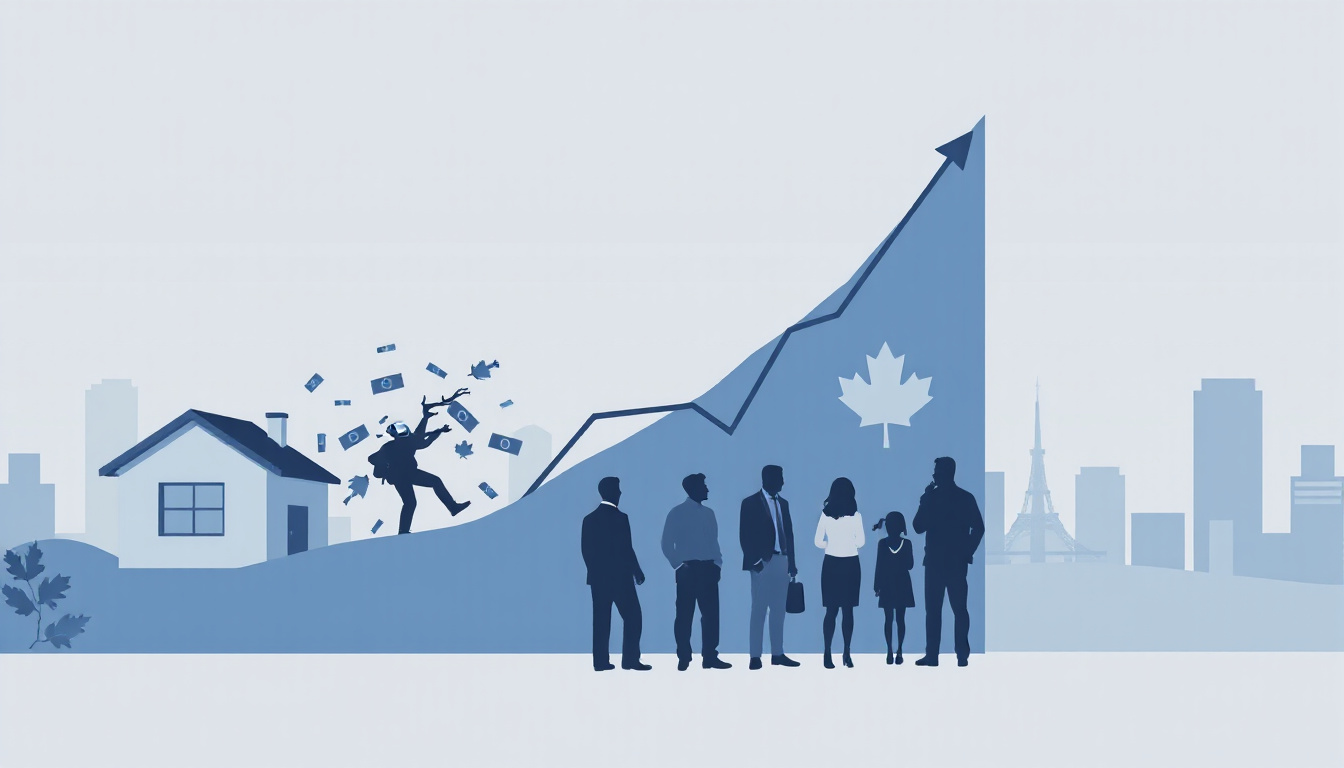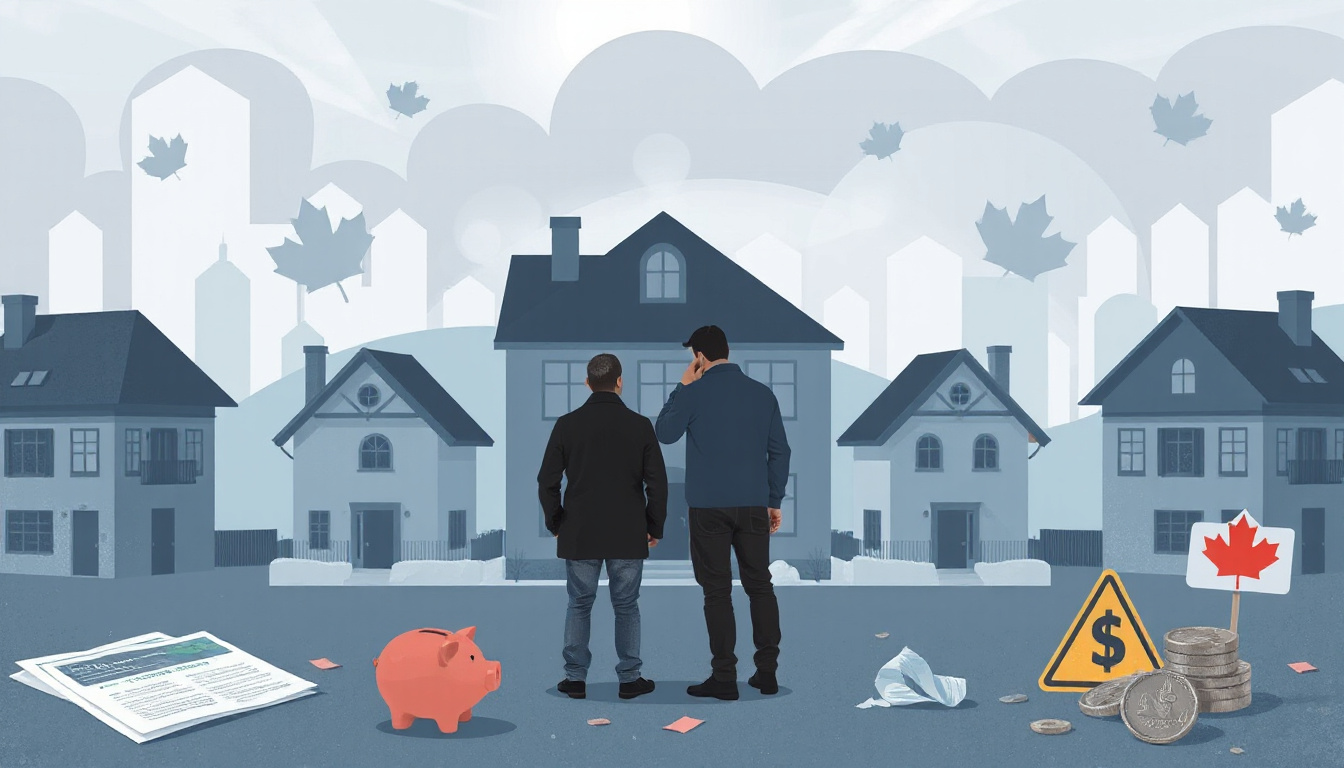Understanding the Mortgage Default Rate in Canada: Trends, Causes, and Solutions

Tyler McAllister
Senior Finance Writer
As of 2023, the mortgage default rate in Canada stands at approximately
0.25%, highlighting a continued trend of low defaults despite rising interest rates and economic uncertainties. This statistic is crucial for understanding the current landscape of Canadian mortgages and the factors influencing borrowers’ ability to meet their obligations. With ongoing fluctuations in the housing market and variable economic pressures, such as inflation and job security, it’s vital to explore the underlying causes of this mortgage default rate and the potential solutions to address future challenges. Sources such as the Canada Mortgage and Housing Corporation (CMHC) provide valuable insights into these trends and issues, making the mortgage default rate a key indicator of the health of the Canadian financial system.

Key Takeaways
- The mortgage default rate in Canada has seen notable fluctuations, influenced by economic conditions and market dynamics.
- Recent trends indicate a rising concern regarding mortgage defaults, particularly in urban areas with high housing costs.
- Key causes of mortgage defaults in Canada include unemployment, rising interest rates, and unsustainable debt levels.
- To mitigate mortgage defaults, stakeholders can explore strategies such as financial literacy programs and better lending practices.
- Government interventions and policies play a crucial role in stabilizing the mortgage market and reducing default rates.
Overview of Mortgage Default Rates in Canada
As of 2023, the mortgage default rate in Canada stands at approximately
0.18%, indicating a stable market with relatively low risk for lenders and homeowners alike. This statistic highlights the resilience of the Canadian housing market amidst economic fluctuations, as reported by the Canada Mortgage and Housing Corporation (CMHC). Despite rising interest rates and the economic impacts of the COVID-19 pandemic, the majority of Canadian homeowners continue to meet their mortgage obligations. According to Statistics Canada, only around 20% of renters cite difficulty with rent payments, showcasing a broader trend of mortgage reliability. Understanding the current mortgage default rate is crucial for potential buyers and policy makers, reflecting the financial health of the housing sector.
Trends Influencing Mortgage Default Rates
As of 2023, the mortgage default rate in Canada stands at approximately
0.22%, a figure that reflects both the resilience of the housing market and the financial stability of Canadian homeowners. This modest default rate indicates that only about 1 in every 450 mortgage holders is at risk of defaulting on their loans. Factors influencing these rates include rising interest rates, which have increased borrowing costs, and a tighter housing market that has made it more challenging for potential buyers to secure financing. Additionally, according to the Canadian Mortgage and Housing Corporation (CMHC), the strong job market and low unemployment rates are helping to maintain a stable economic environment, further supporting homeowners in keeping up with their mortgage payments. Despite potential challenges, experts predict that due to these trends, defaults are likely to remain manageable in the coming years.
‘In the world of finance, the first step to understanding the future is to understand the past.’ – Unknown

Causes of Mortgage Defaults in Canada
As of late 2023, the mortgage default rate in Canada stands at approximately
0.3%. This statistic reflects an ongoing trend of relatively low defaults, which can be attributed to various factors including government support programs and historically low interest rates. However, as interest rates begin to rise in 2024 and beyond, analysts are closely monitoring this rate for potential increases. According to a recent report from the Canada Mortgage and Housing Corporation (CMHC), rising costs of living and higher home prices are also contributing factors that could influence future mortgage defaults. The data suggests that while most Canadians continue to meet their mortgage obligations, financial pressures are mounting, potentially impacting this rate in the coming years.
Potential Solutions to Mitigate Default Rates
As of 2023, the mortgage default rate in Canada is approximately
0.23%, indicating a relatively stable housing market despite economic uncertainties. This figure, provided by the Canada Mortgage and Housing Corporation (CMHC), reflects the percentage of mortgage borrowers who have fallen behind on their payments or are in default. With rising interest rates and inflationary pressures, experts are assessing potential solutions to mitigate these rates, encouraging financial education among homeowners and increased access to supportive programs. A proactive approach, along with government initiatives aimed at enhancing borrower responsibility and financial literacy, can play a crucial role in preventing defaults and maintaining homeownership stability.
